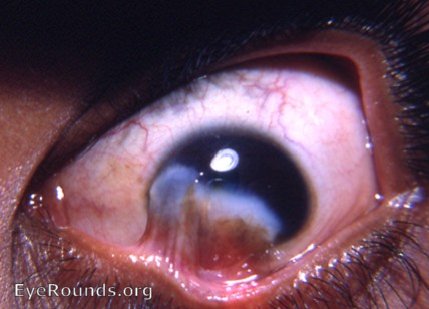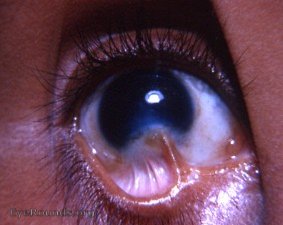




The cause of the total symblepharon in this patient, the history, was very vague. Possible causes: lye thrown in patient's eyes over a land dispute or spontaneous perforation of both corneas by ulcus serpens/hypopyon ulcer. In the latter scenario, the patient wouldhave been supine, in a stuporous state with both eyes closed for several days. In that case, the lids would become attached to the cornea and bulbar conjunctiva of each eye.

Ophthalmic Atlas Images by EyeRounds.org, The University of Iowa are licensed under a Creative Commons Attribution-NonCommercial-NoDerivs 3.0 Unported License.